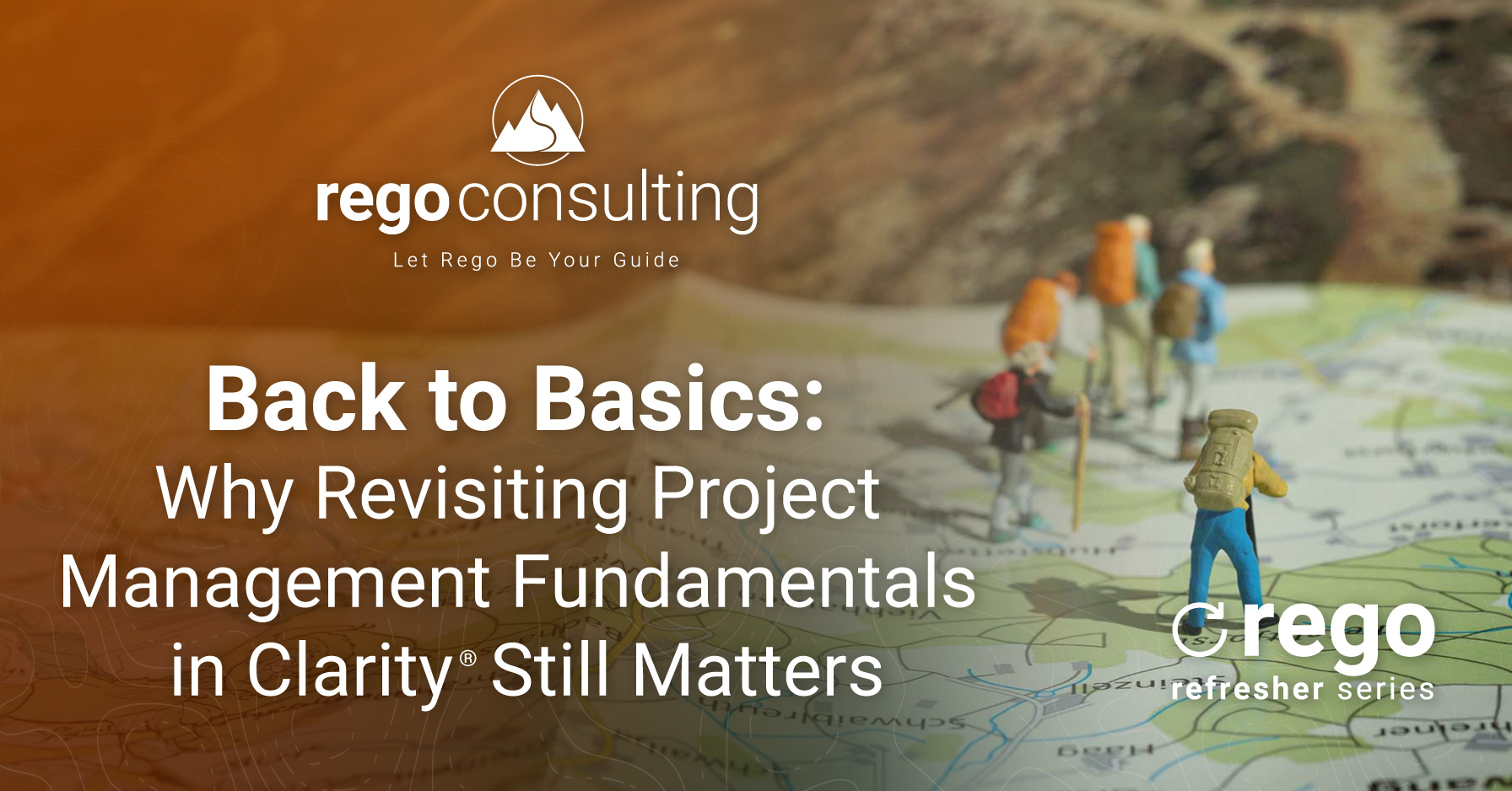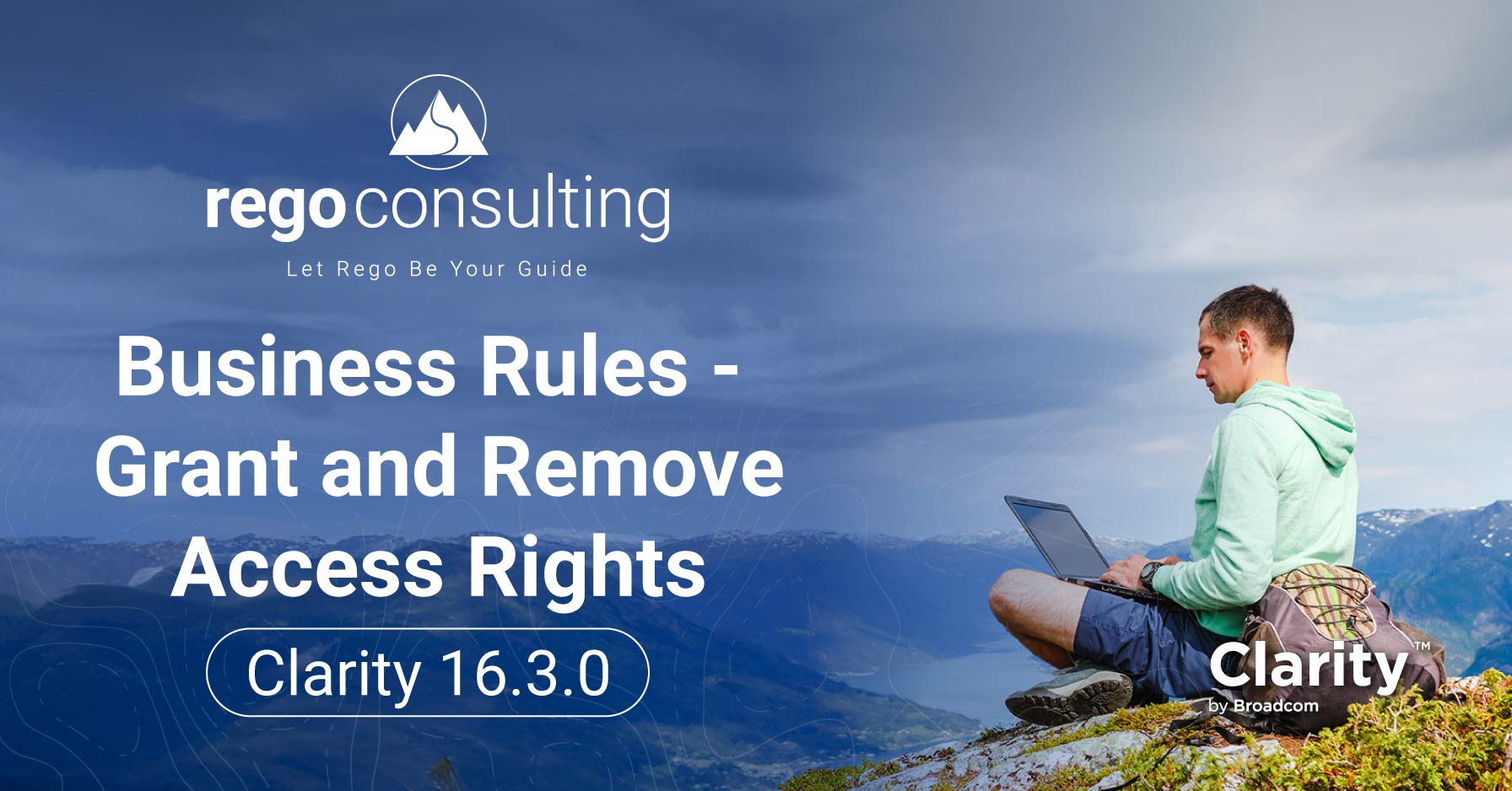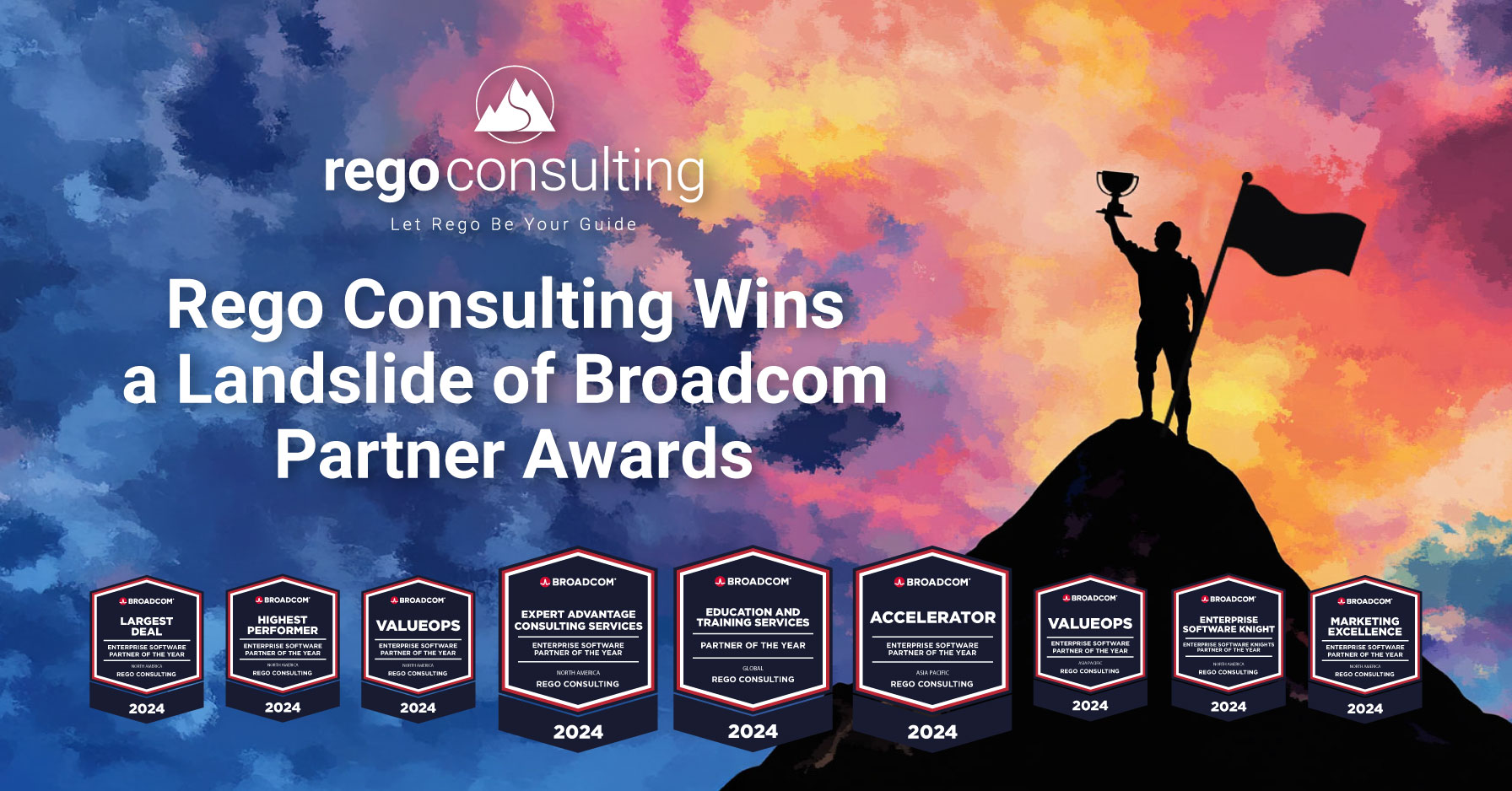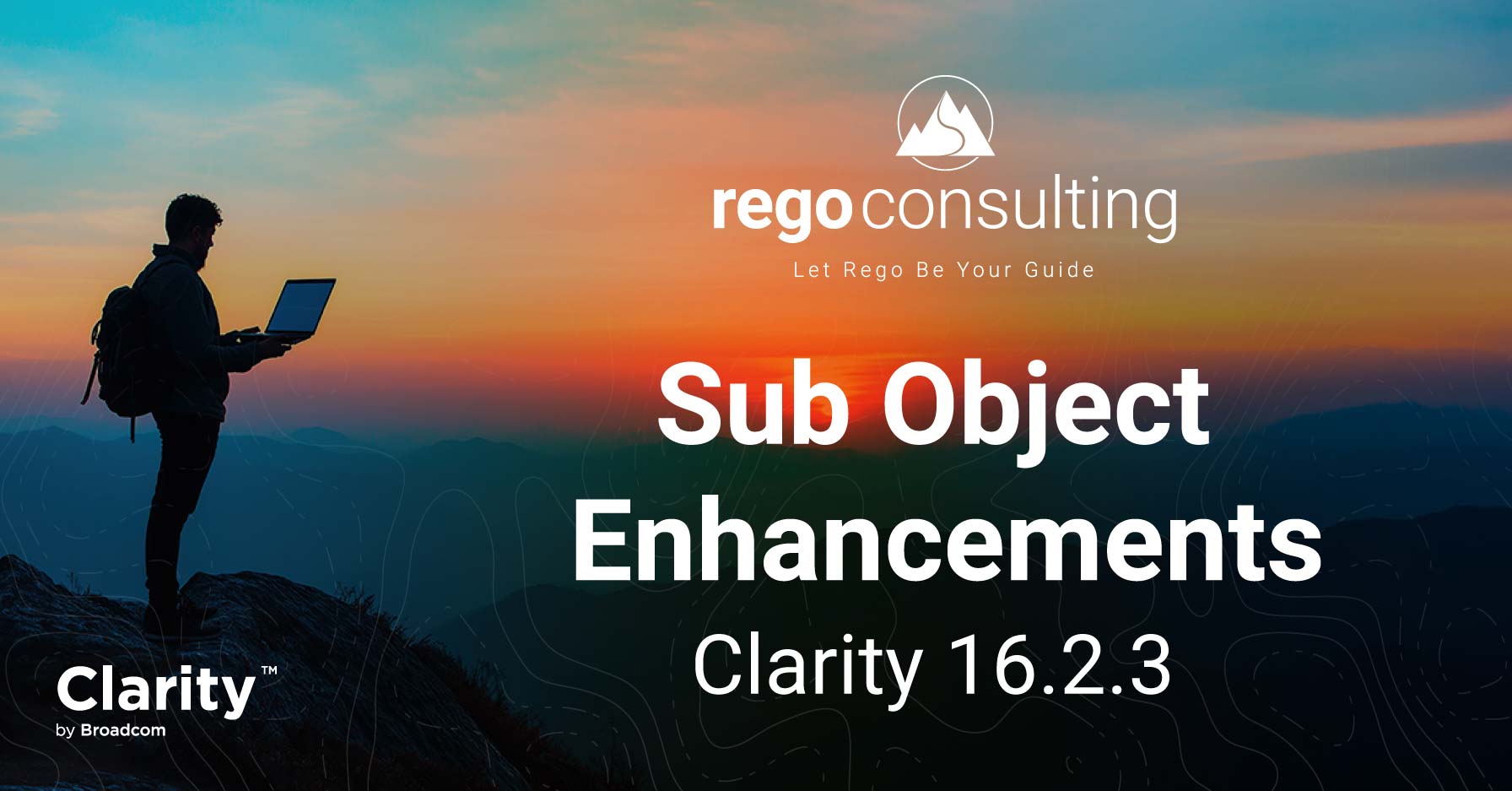
Did you miss our RegoUniversity Clarity PPM (CA PPM) Best Practice Camp webinar on Demand Management? Today, we’ll cover an overview of the discussion, brought to you by Rego expert guides Joe Almeida, Wes McCoubrie, and Jacob Cancelliere.
We’ve made the webinar available on-demand, so you can watch it at your convenience.
These days, our clients want to streamline, centralize, and simplify their Demand Management process. Why? Because ideas drive problem-solving. When we implement Demand Management, it introduces a centralized method of obtaining project information.
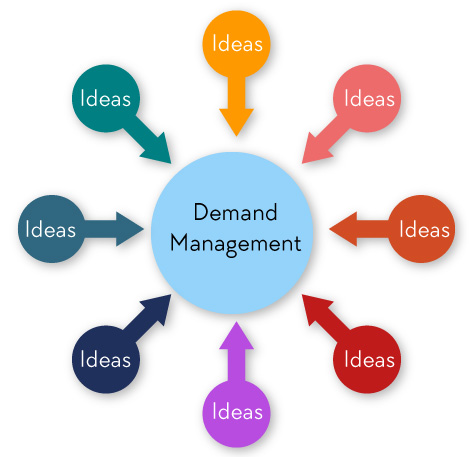
To establish an effective Demand Management process, we setup an organized location for ideas to come in, so we can make informed decisions. We need a simplified, objective selection process and standardized information. That means getting a specific set of data points we can analyze for financial decision-making.
Company Culture and Goals
We want to see value in the Demand Management process, so we focus on the idea intake phase to give us a complete understanding of opportunity costs.
We recently presented at the Gartner 2019 PPM conference on turning IT organizations into innovation incubators. We treat resources like entrepreneurs, and Demand Management is an exciting way to establish a culture of employee investment. Our people matter, their ideas matter, and leveraging human capital for idea creation supports an Agile environment.
Empowering resources creates stability. This leads to direct, long-term HR benefits. We’ve seen PMOs partner with HR to create hard-to-find skillsets by investing in employee development. This increases retention and launches a shift into skill-building, which stabilizes the enterprise.
People crave structure. We can boost morale by simply reducing the amount of chaos and stress through structured Demand Management.
Stumbling Blocks
 Inaccurate resource and project data hold companies back from their goals. Demand Management best practices can boost portfolios and help create more accurate reporting information as a demand becomes a project.
Inaccurate resource and project data hold companies back from their goals. Demand Management best practices can boost portfolios and help create more accurate reporting information as a demand becomes a project.
Because business users are the ones who usually enter ideas, the idea funnel starts with them. We see customers ask for information that ends up in Product Development or as an IT project, so we account for them in our system of record, too.
Over-engineering Demand Management makes adoption difficult. The more hurdles people have to go through to submit an idea, the less likely they are to follow through. We keep things simple, and solicit the minimal amount of information we need to know in order to evaluate an idea. Gatekeepers can review the information before it moves on. This is one area where minimal investment can lead to maximum value. Features and details can always be added later, but our initial intake form only uses one page on a computer screen.
Asking business users to enter ideas might seem like a non-starter, but people are tech-savvy these days. They’re used to interacting with clean UI tools, like Clarity PPM. Another intake form option is to keep a Salesforce or home-grown UI as the entry point, and use Clarity PPM to power the mechanics.
To manage demands, we can use an all-user entry approach or a moderated entry approach. There are pros and cons to each, which we’ll cover below. It’s ok to move between the two as our demand management process matures.
Two Demand Management Approaches
Approach 1: All-User Entry
With all-user entry, any employee can enter a demand or idea at any time. We can think of this approach as an “open door organization.”
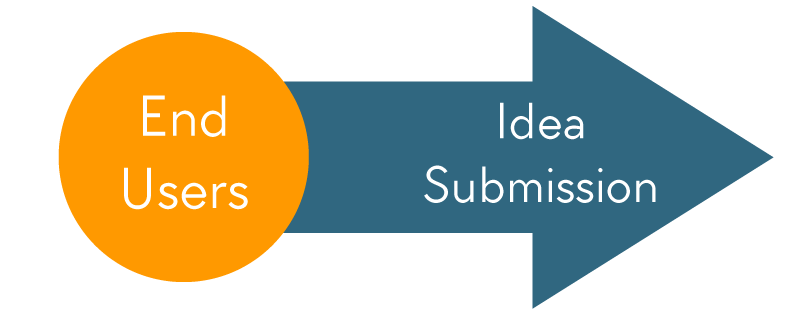
Pros
|
Cons
|
Approach 2: Moderated Entry
With moderated entry, any user can submit an idea, but those ideas go through a review process or triage before they reach the executive level. The gatekeeper can be a department head, Business Relationship Manager, or Business Analyst.
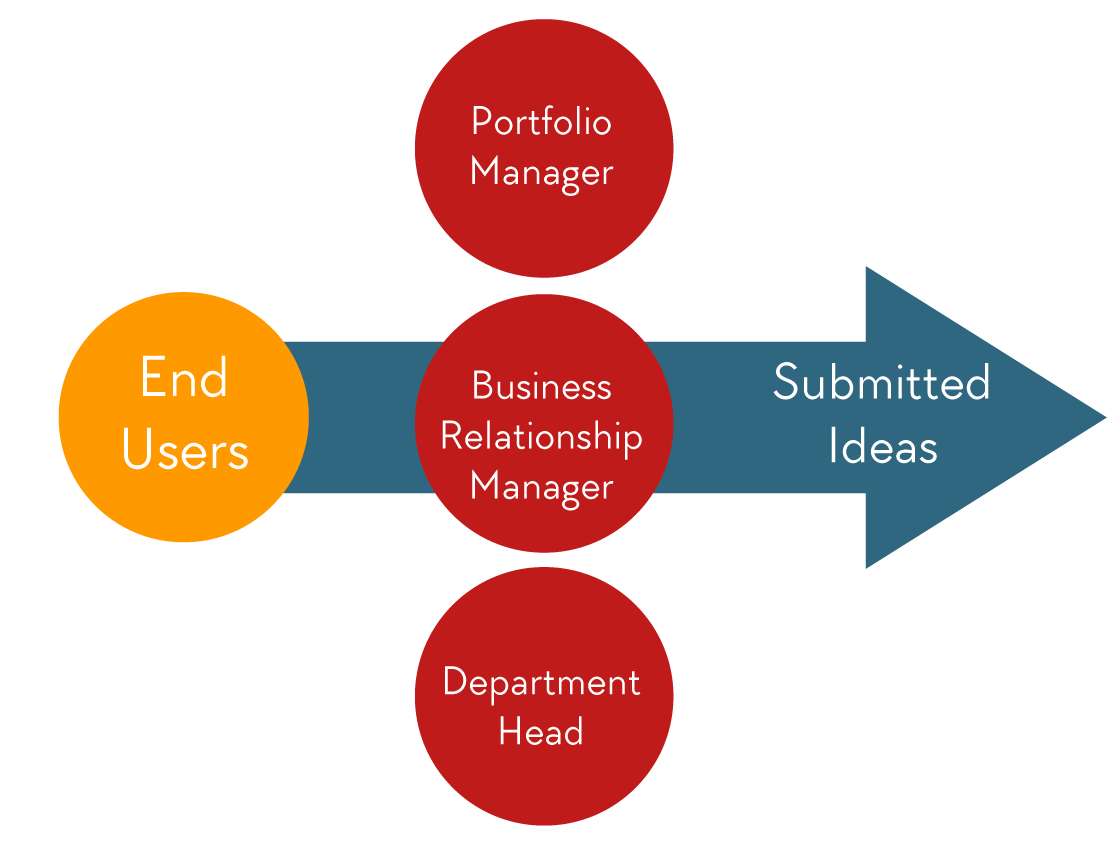
Pros
|
Cons
|
| We like to think of these two approaches as an evolution. Moderated entry is usually used to set up Demand Management in the beginning, but we can continue to open up that method as the Demand Management process matures. | |
Best Practices
We implement Demand Management the easy way. Here are our best practices.
1. Keep It Simple
What types of ideas are we looking for? What are our priorities? What kind of requirements do we absolutely need? We focus on core data, analysis, and evaluation. Quantifiable questions align our organization and enable faster decision-making. A one-page intake form is all we need to avoid over-engineering our process.
2. Be Strategic
What are the top 3 strategies our idea could align to? We can generate a score based on how our idea ranks in different categories, like culture, adoption, price range, and more. Using a drop down menu for questions helps us avoid those who might take advantage of the questions to get their ideas to the top of the list.
3. Use Standardized Forms
Is there duplication in our process? Do we hold regular reviews and make sure they aren’t postponed and rescheduled? Avoid redundancy by using common tables between attributes and elements in Clarity PPM, and always build everything on the investment object. Clarity’s out-of-the-box idea workflow has a nice level of configuration without custom workflows or notifications.
4. Use Portfolios
Are we using portfolios to evaluate demands? Portfolios create a sandbox where we can compare them with in-flight projects or demands. We can incorporate waterlines for easily viewing scenarios and drafting a plan for what will happen when a new demand is brought in. Portfolios give a holistic view of our projects.
Thank you to our expert guides.
Joe Almeida
A believer that there is always a better approach to a flawed process, Joe Almeida has honed his skills over seventeen years in project management. He is a PMI Project Management Professional (PMP), Certified Scrum Master (CSM), and a Certified ServiceNow Administrator.
Wes McCoubrie
Wes McCoubrie is a Solution Architect with twelve years in the PPM space. At various companies, he has led PMOs and helped establish Tools & Governance teams filled with great people.
Jacob Cancelliere
Jacob Cancelliere is a PMP certified Project and Portfolio Management expert. He has more than ten years of experience in PPM system implementations and has helped over a dozen PMOs design and implement sustainable solutions. Jacob specializes in resource management tools and methodologies to help create balanced project roadmaps and supported staffing plans.
Let Rego Be Your Guide
Rego also offers free health assessments, webinars, and half-day training classes for Clarity on Roadmaps in the Modern UX, Power BI, Portfolio Management, and Jaspersoft.
For a full list of Clarity Services, visit regoconsulting.com.
Rego Drives Clarity PPM Innovation
Rego would be delighted to show you how we can meet your Clarity consulting needs. Contact us for a free health assessment or demo today, and be sure to join our mailing list below.

